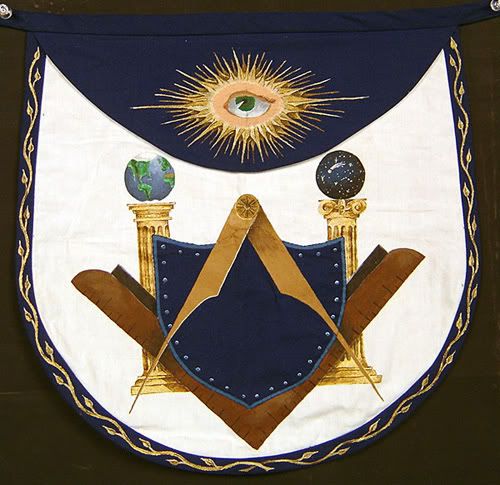In researching the history of Fullerton, I think it is important to talk about the Masons, because lots of men in Fullerton used to be Masons, including the first mayor, Charles C. Chapman. The current Springfield Banquet Hall on the corner of Harbor and Chapman is the old Masonic Temple, or Lodge. Unfortunately, I know very little about the Masons. What were they all about? What was the appeal? Apparently, they used to be a really big deal. Some of our founding fathers were freemasons, including George Washington and Benjamin Franklin. What the heck is freemasonry?
In researching this topic, my first instinct was to go to Wikipedia, which gave a lot of information. But, in my English classes today, I told my students NOT to use Wikipedia as a research source because it is user-generated and not peer-reviewed (like academic journals are). So then I went to the freemasons’ web site, but that seemed more like a marketing puff piece. Where could I find good, accurate information about the masons?
So I did what I tell my students to do: use library databases. The most commonly used library database is EBSCOhost and you can get on it if you have a student ID at most colleges. I’m not sure if the Fullerton public library subscribes. But I teach at two colleges, so I hopped on EBSCOhost, typed in “freemasons” and viola! Lots of interesting peer-reviewed academic articles popped up.
Once you get past the overly-long titles and unnecessarily bloated vocabulary, these articles turn out to be quite informative. In her essay “Masculinity, Consumption, and the Transformation of Scottish Rite Freemasonry in Turn-Of-The-Century United States” from the journal Gender & History, Mary Ann Clawson writes, “As the nation’s largest complex of dues-paying membership organizations, fraternal orders [like the Masons] were a major social and cultural presence throughout protestant America, both white and black, in the late nineteenth and early twentieth centuries” (104).
Why just Protestant America and not Catholic America? Because like seven different popes made pronouncements condemning freemasonry. But Catholics were never really that well-liked in America until JFK made it okay. Anyway, freemasonry used to be really really popular: “In 1900, for example, the two largest [fraternal orders] the Masons and the Independent Order of Odd Fellows, had one million members each” (Clawson 104). This was a time when the entire population of the US was around 22 million.
Were African Americans accepted by the Masons? Yes and no: “African Americans, barred from the racially exclusionary organizations of the dominant white majority, established parallel orders such as the Prince Hall Masons and the Grand United Order of Odd Fellows, which occupied an equally important role in black communities. The racially exclusive practices of white Masons in the US conflicted quite obviously with Freemasonry’s explicitly articulated universalism” (104). Freemasonry claimed to be about universal brotherhood, but kept African Americans separate. The founding fathers apparently saw no problem with this, which may explain why they could write in the Declaration of Independence “All men are created equal” while at the same time owning human slaves. Incidentally, 13 of the 39 signers of the Declaration of Independence were Masons.
More to come on the Masons!

Some Masons wear aprons like this one.
